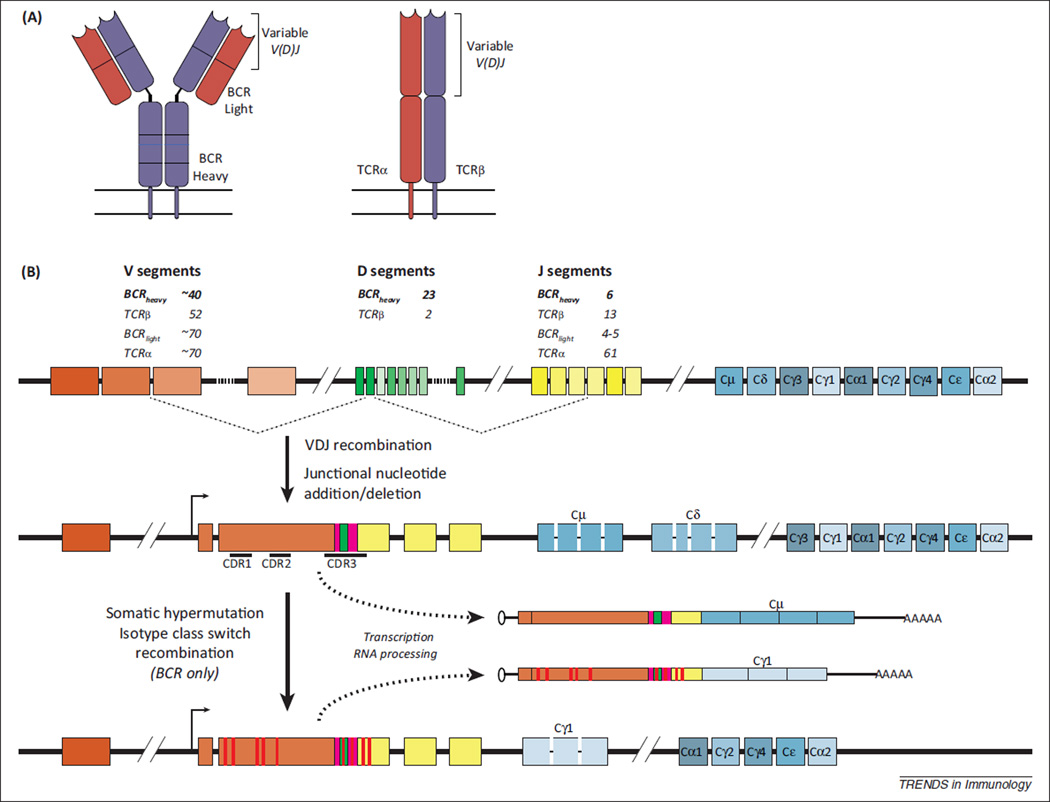Figure 1.
Diversification of antigen receptor repertoires. (A) BCRs and TCRs are similarly organized. Each receptor is composed of two distinct subunit chains (BCR: light chain and heavy chain, TCR: α chain and β chain). The antigen binding surface is formed by the variable region of each chain, which is encoded by recombined V, J, and D (BCR heavy and TCRβ) gene segments. (B) Antigen receptor diversification. A schematic of the BCR heavy locus is shown; with the exception of somatic hypermutation and class-switch recombination, analogous mechanisms proceed at the TCRβ locus (with differences in segment organization). Antigen receptor repertoire diversity is primarily established during lymphocyte development, during which V (orange), D (green), and J (yellow) gene segments are rearranged through the process of V(D)J recombination. Numbers of distinct V, D, and J segments are shown for each antigen receptor locus [2]. During the recombination process, nucleotides may be added or deleted at segment junctions (magenta), contributing to additional sequence diversity. Complementarity determining regions are indicated. BCR-specific secondary diversification may occur following antigen recognition. In somatic hypermutation processes, mutations (red) are introduced throughout the variable region such that modified BCRs may be selected through affinity maturation. In class-switch recombination, gene segments encoding constant regions (blue) are rearranged resulting in the production of antibodies with different isotypes and corresponding effector functions. Abbreviations: BCR, B cell receptor; TCR, T cell receptor; V, J, and D, Variable, Joining, and Diversity gene segments.

